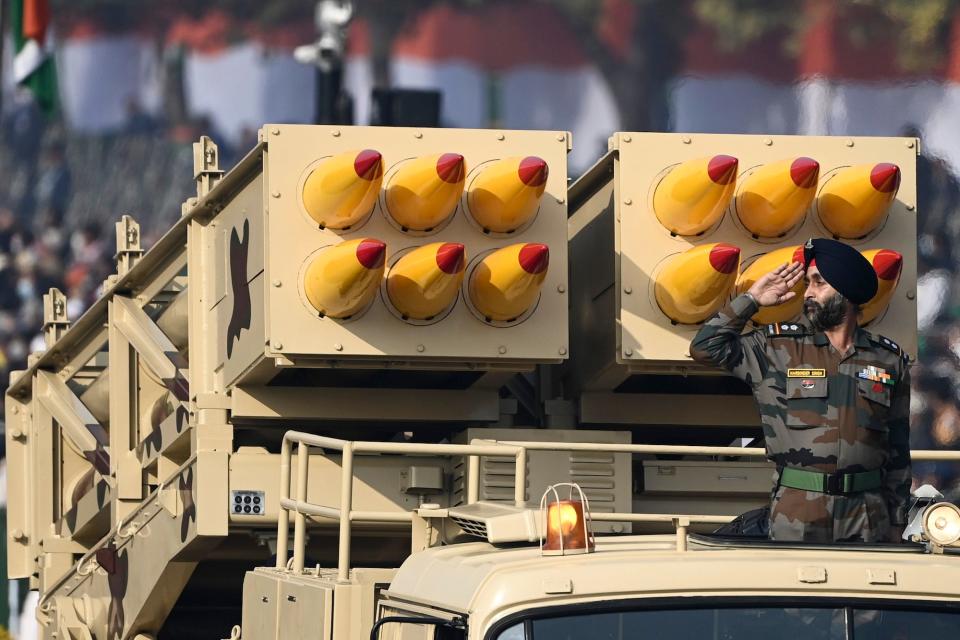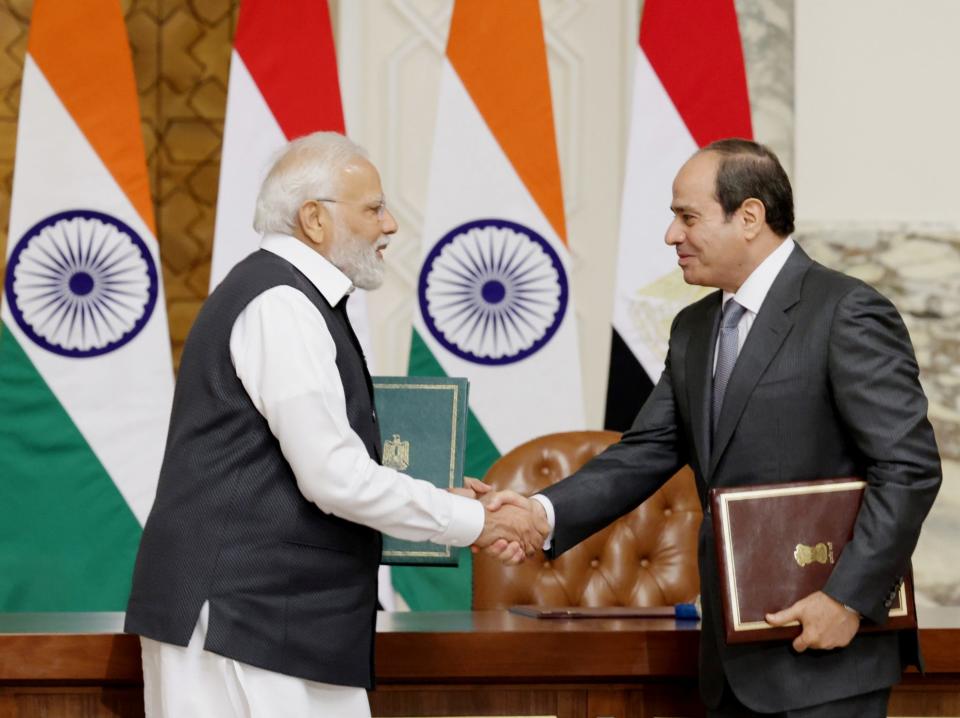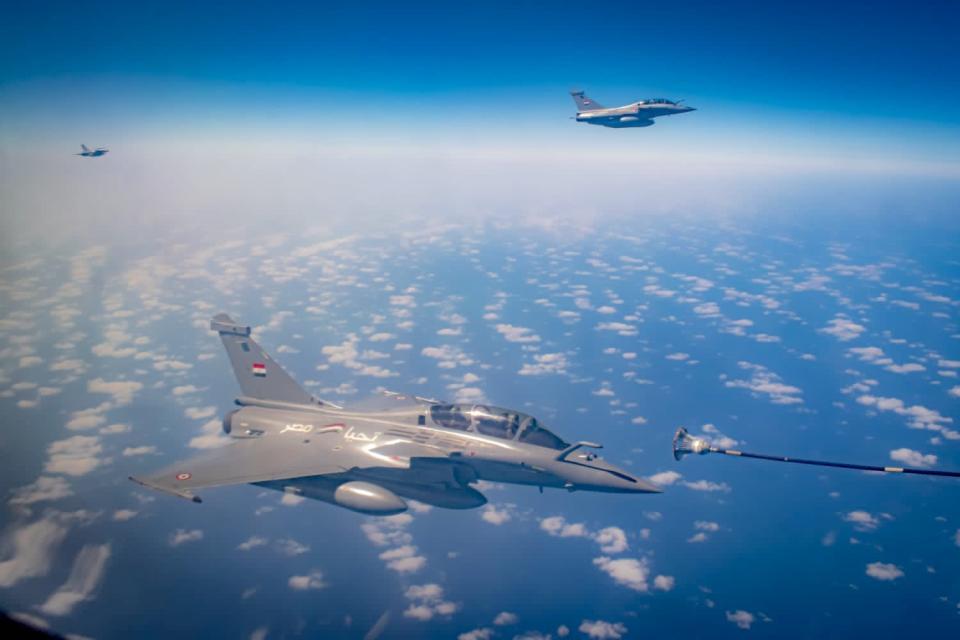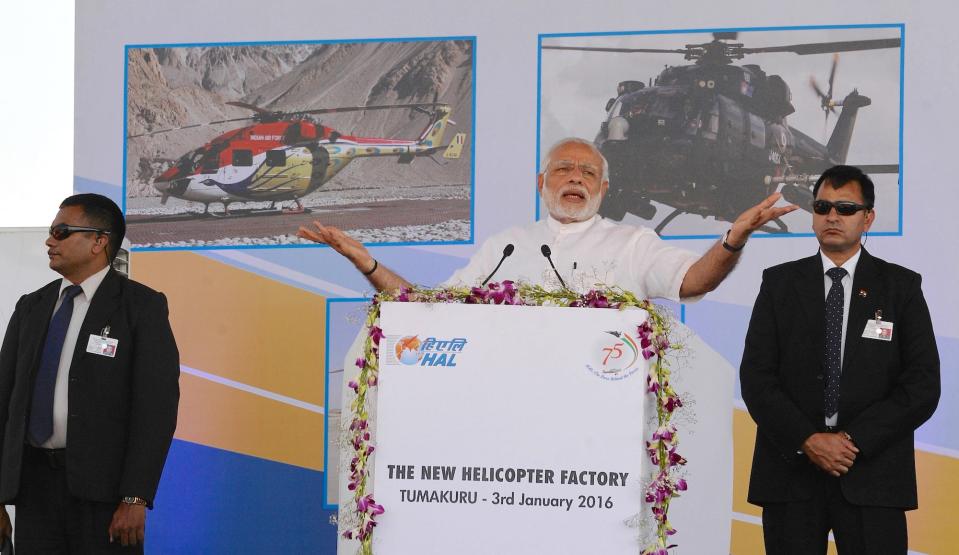India is a growing defense powerhouse, and now it's looking to cash in on it
India has long been one of the world's biggest arms buyers, relying on others to equip its forces.
But New Delhi is investing heavily in domestic production to arm itself and export to the world.
Recent weapons sales and military exercises in the Middle East reflect that new outward focus.
India has long been the world's largest arms importer, relying on other countries to supply it with tanks, warships, and fighter jets. But it has been investing heavily in its domestic arms industry with the goal of equipping its own forces and increasing its arms sales around the world.
New Delhi has made headway toward that goal with its "Make in India, Make for the World" initiative, launched in 2020, and by forging closer defense relationships with other countries.
India's need to wean itself off its heavy dependency on arms imports became more apparent after Russia attacked Ukraine in 2022. New Delhi still has close ties with Moscow but the war has made the Russians less dependable suppliers.
Recent arms sales and exercises illustrate how India seeks to turn that domestic arms production into foreign sales and perhaps even take some of that market away from its biggest supplier.
Shopping around

In September 2022, India agreed to sell its powerful Pinaka multi-barrel rocket launchers to Armenia — the first foreign export of the Pinaka — along with anti-tank missiles and assorted ammunition in a $260 million deal.
That sale came two and a half years after Armenia bought four of India's Swathi counter-battery radars, which track incoming artillery and rockets and plot return fire, for $40 million, choosing the Indian option over equivalent Polish and Russian systems in what was considered a big achievement for the then-nascent Make in India program.
New Delhi's aspirations for a foothold in the African and Middle East arms markets would undoubtedly get a boost from a sizable arms deals with Egypt. Over the past decade, Egypt has spent large sums on high-end weapons systems, primarily from France and Russia. Between 2015 and 2019, Egypt was the world's third-largest arms importer.
India has been improving its ties with Egypt, as seen in their expanded military exchanges.

India's air force and navy participated in Egypt's Bright Star-23, a multilateral military exercise, in September. It was the first time India had joined, and during the drills, an Indian air force Il-78 tanker refueled Egyptian MiG-29M and Rafale fighters — Russian- and French-made jets, respectively.
That refueling underscored the degree of interoperability the militaries have developed and illustrated the countries' rapidly growing defense ties — ties that may translate into arms sales, particularly of India's domestically developed weapons.
In January, Egyptian President Abdel Fattah el-Sisi visited New Delhi and met with Indian Prime Minister Narendra Modi. The leaders discussed "defense platforms" and "equipment-related linkages" and deepening cooperation between their militaries and defense industries.
In June, Modi visited Egypt, the first visit to Cairo by an Indian leader since 1997, where the two leaders decided to boost cooperation in several fields, including security and technology. During Modi's visit, a former Indian Air Force chief told Indian media that the countries were eager to cooperate on military research, development, and manufacturing.

"There is a very significant possibility of exporting weapon systems, sensors and platforms and also supporting Egypt" in its efforts to "building up their own industrial complex," the former air force chief was quoted as saying, noting their "commonalities of equipment, and thinking."
There have been reports that India is interested in selling Egypt about 20 its Tejas light multi-role combat jets and in setting up production lines for that aircraft and for Indian-made helicopters in Egypt.
In February, the chairman of Hindustan Aeronautics Limited, which makes the Tejas, said the company was in talks to supply 35 Tejas Mk-1As to Egypt alongside a complete technology transfer that would enable Cairo to build the aircraft locally. (Egypt and India collaborated on development of the Helwan HA-300 light supersonic interceptor in the 1960s, but that project was ultimately canceled.)
India has also shown interest in exporting its domestically developed Akash medium-range air-defense system and the BrahMos cruise missile to a number of countries, including Egypt. Brahmos is a joint Indian-Russian venture and officials are now angling for billions in foreign sales of it.
Cashing in on the value market

While some of these deals could undoubtedly boost India's defense exports, it is still early days. After all, Indian defense exports in recent years were negligible compared to heavyweights like the US and France, and New Delhi remains heavily reliant on imports.
In the coming years, India could carve out a sizable place for itself in the growing market for "value arms," which caters to countries looking for a better deal on older or slightly less capable hardware.
With a bigger share of that market, India could replace Russia and compete with China for exports, profits from which would also help Indian firms develop indigenously made equipment to fulfill domestic requirements.
While selling arms to Armenia may eventually be seen as the start of the Make in India initiative's ambitious effort to take New Delhi from the being the world's largest arms importer to a significant exporter, making that transformation is much easier said than done.
Securing even bigger deals with Egypt and other countries, and sweetening the pot with technology transfers and other incentives, might get that effort farther off the ground, helping India stand out in a crowded marketplace.
Paul Iddon is a freelance journalist and columnist who writes about Middle East developments, military affairs, politics, and history. His articles have appeared in a variety of publications focused on the region.
Read the original article on Business Insider


